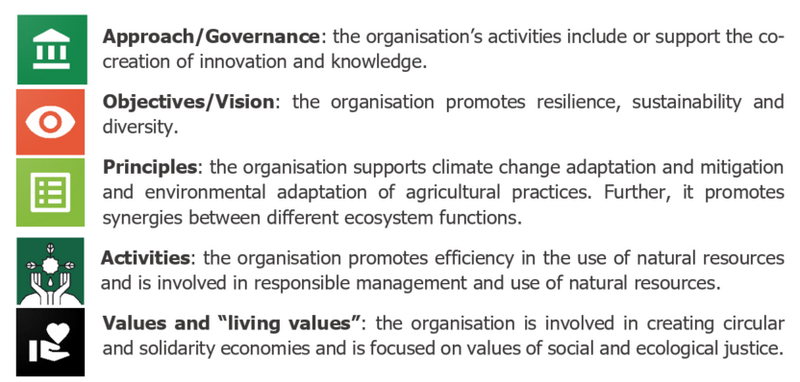ALL-Ready criteria and indicators for the network inclusion
In order to identify organisations that could strengthen the transition to agroecology in Europe, ALL-Ready compiled a set of criteria and indicators.
The future network of living labs and research infrastructures could include organisations:
- that are already actively involved in the agroecology transition;
- whose involvement in the agroecology transition could be accelerated by their belonging to the network;
- whose involvement in the network will be beneficial to other network members, thereby accelerating the agroecology transition.
The ALL-Ready criteria focus on the activities and values of the organisations rather than their descriptions or establishment histories, making sure relevant organisations are included in the network, even if they do not identify themselves as living labs or research infrastructures. The mapping of potential organisations is under preparation and it will be done in a close collaboration between ALL-Ready and AE4EU in 39 European (EU and non-EU) countries. The criteria aim to be inclusive regarding all aspects of the food system (e.g., production, processing, distribution, consumption). The first set of criteria were identified by compiling key recommendations for agroecology transition from diverse relevant sources using the same conceptual framework based on the correspondence between agroecology principles and the unique features of living labs and research infrastructures. The evaluation and completion were performed during a stakeholder workshop with around 50 participants (representing farmers associations, funding agencies, academics, representatives of food industry, and others). The criteria were then finalised through several exchanges within an expert group.
The criteria could be used to:
- determine the inclusion/exclusion boundaries for the network. A questionnaire was prepared by INRAE and certain threshold for inclusion will be defined for the mapping of potential actors in agroecology transition.
- enhance understanding of the agroecology transition in Europe. For example, the criteria can be used to understand which aspects of the transition are being prioritised by actors already and which need further attention to achieve a holistic development.
- evaluate the progress of the transition and of the network specifically. For example, the criteria could be used in the design of repeated surveys of network members to highlight areas which require further support, or specific gaps in the network which could be filled by the inclusion of specific additional actors.
The criteria and indicators are divided into the following categories:

 tap and then scroll down to the Add to Home Screen command.
tap and then scroll down to the Add to Home Screen command.